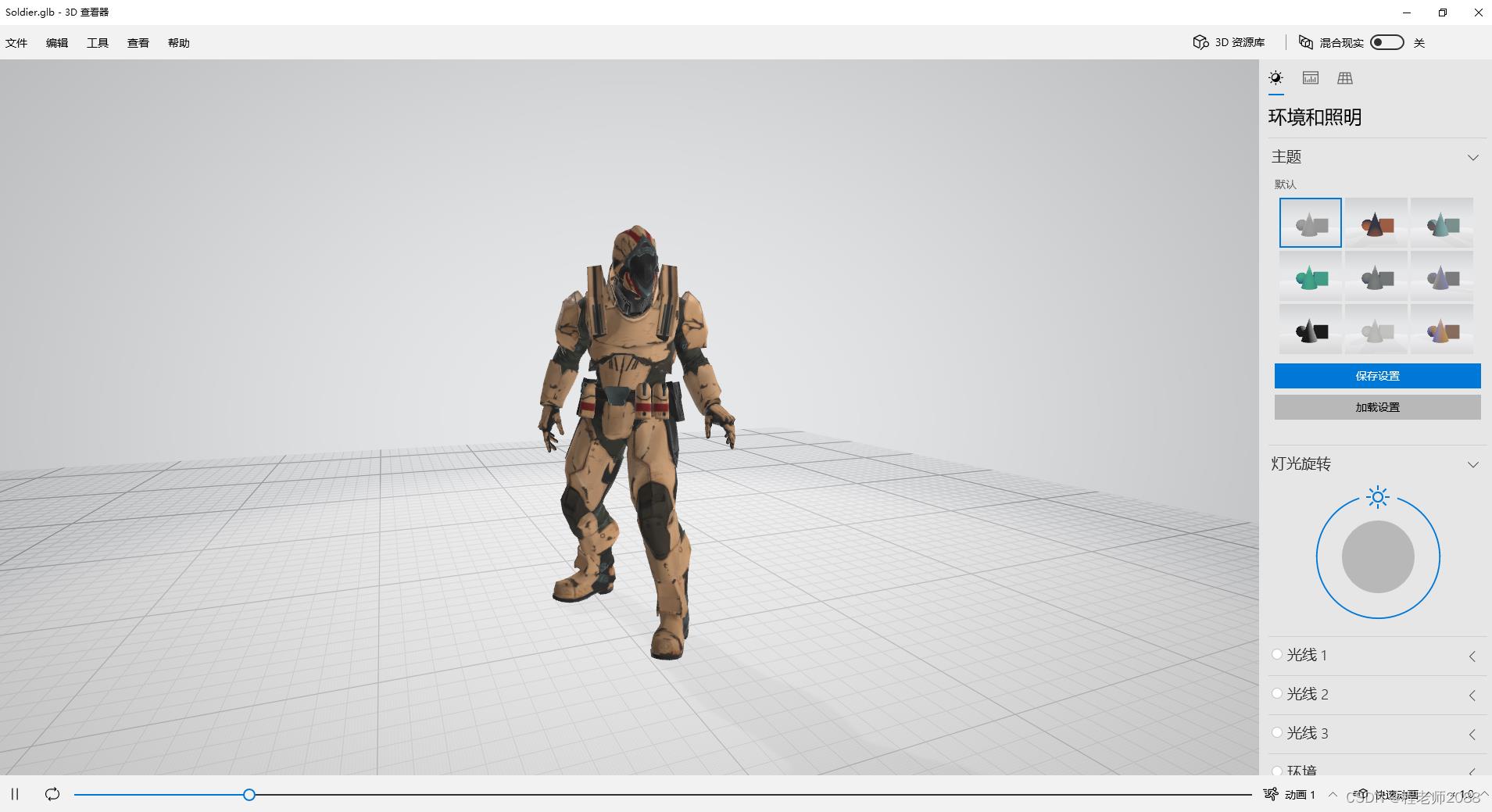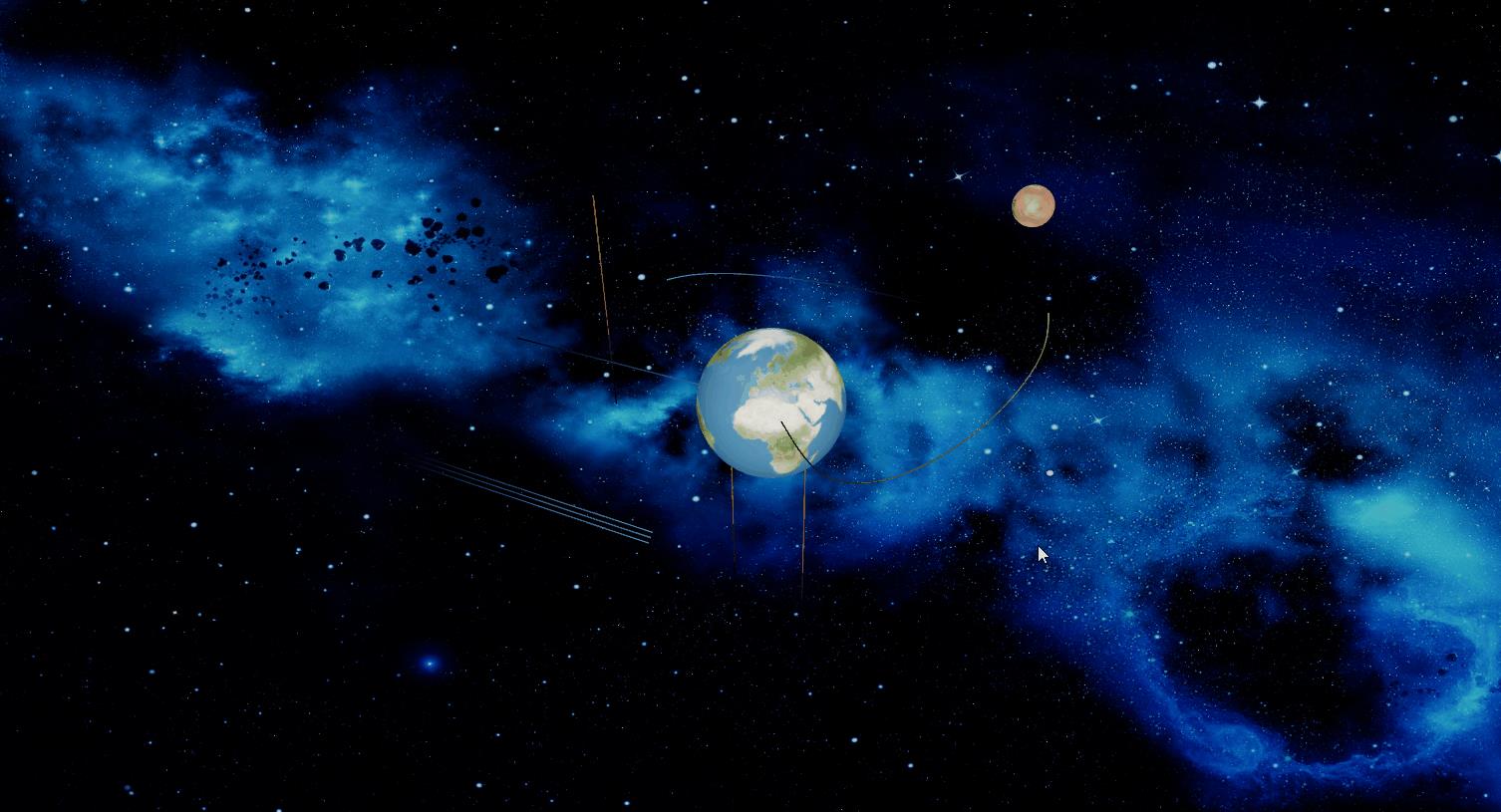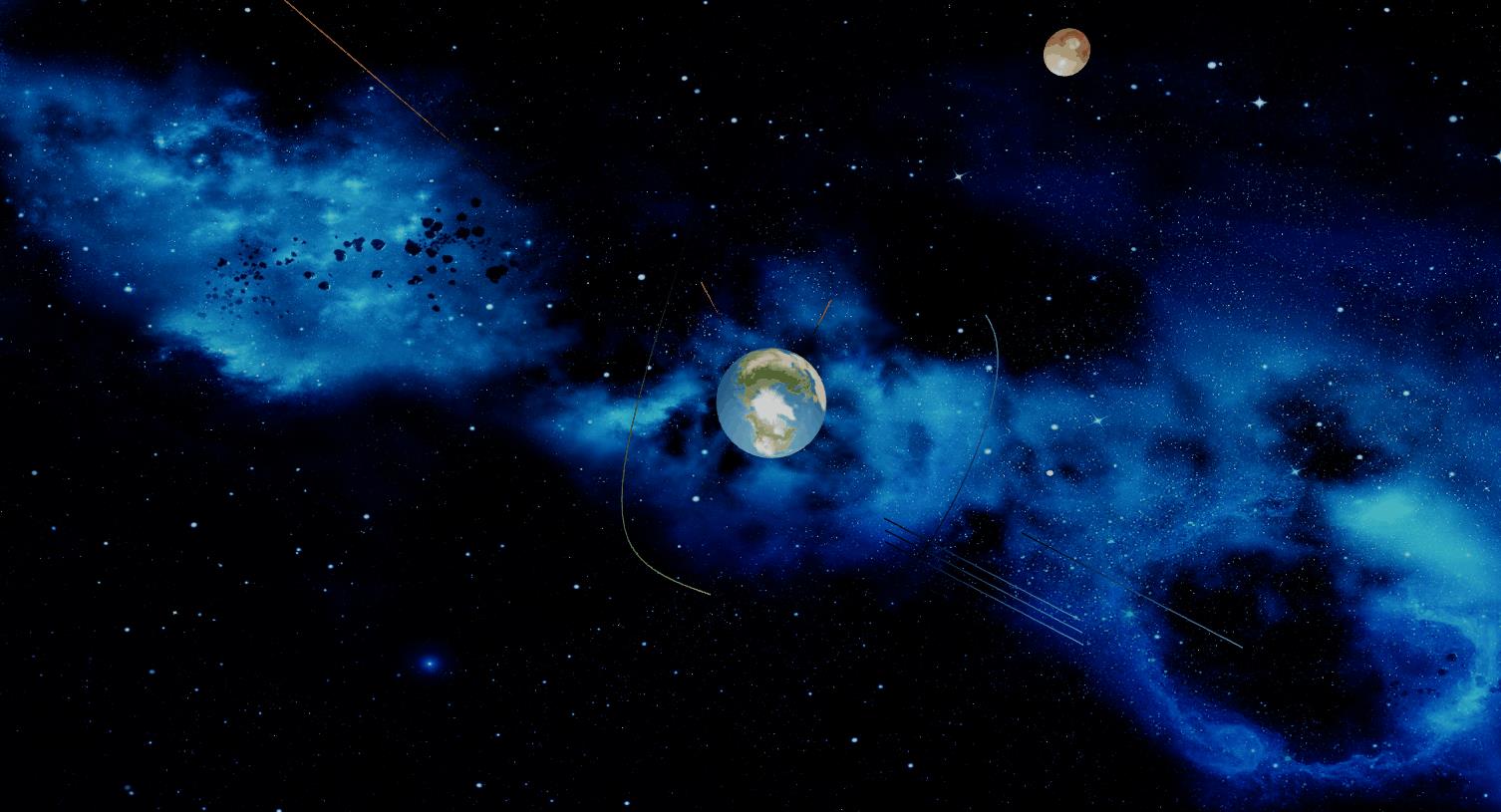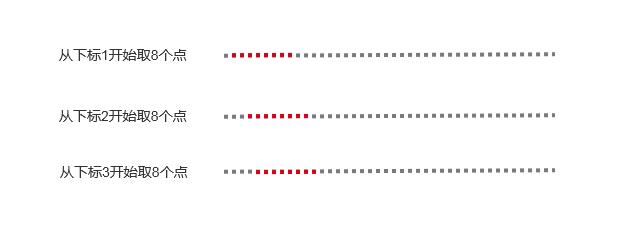Three.js手把手教你在三维场景中实现人物行走动画效果
Posted 程老师2088
tags:
篇首语:本文由小常识网(cha138.com)小编为大家整理,主要介绍了Three.js手把手教你在三维场景中实现人物行走动画效果相关的知识,希望对你有一定的参考价值。
three.js的官方例程里面有个人物行走的案例,链接如下:
这里简单剖析下人物行走的原理:
(1)
首先需要有个动画素材。gltf是可以集成动画的,像行人行走的动画,一般是通过骨骼动画实现的。一个gltf里面可以有多组动画,加载到three.js引擎里面之后,可以选择所需要的动画进行播放。
(2)
一般来说,人物行走的轨迹需要通过程序指定。当然,glb里面直接集成了位移的动画也不是不可以,但这样的轨迹控制就不方便。所以一般来说,glb动画就是人物在原地走动甩腿就可以了,通过程序来变更其位置。
官方的glb可以在windows下的3d查看器打开。

右下角可以切换不同的动画,这个例程里面有4个动画,奔跑、慢走、站立、伸展。有兴趣的小伙伴自己切换来看下。

那接下来我们开始写代码。
1、首先引入threejs的相关库
<script type="importmap">
"imports":
"three": "./threejs/build/three.module.js",
"three/addons/": "./threejs/jsm/"
</script> <script type="module">
import * as THREE from 'three';
import GLTFLoader from 'three/addons/loaders/GLTFLoader.js';
import * as SkeletonUtils from 'three/addons/utils/SkeletonUtils.js';
</script>2、定义好相关的变量。
各个变量的含义可以直接根据变量名读出来
let camera, scene, renderer;
let clock;
let model1,model2;
const mixers = [];3、接下来写一个初始化函数init。
这个是搭建three环境的厂员工操作了
function init()
camera = new THREE.PerspectiveCamera( 45, window.innerWidth / window.innerHeight, 1, 1000 );
camera.position.set( 2, 10, -25 );
camera.lookAt( 0, 1, 0 );
clock = new THREE.Clock();
scene = new THREE.Scene();
scene.background = new THREE.Color( 0xa0a0a0 );
scene.fog = new THREE.Fog( 0xa0a0a0, 10, 50 );
const hemiLight = new THREE.HemisphereLight( 0xffffff, 0x444444 );
hemiLight.position.set( 0, 20, 0 );
scene.add( hemiLight );
const dirLight = new THREE.DirectionalLight( 0xffffff );
dirLight.position.set( - 3, 10, - 10 );
dirLight.castShadow = true;
dirLight.shadow.camera.top = 4;
dirLight.shadow.camera.bottom = - 4;
dirLight.shadow.camera.left = - 4;
dirLight.shadow.camera.right = 4;
dirLight.shadow.camera.near = 0.1;
dirLight.shadow.camera.far = 40;
scene.add( dirLight );
// scene.add( new THREE.CameraHelper( dirLight.shadow.camera ) );
// ground
const mesh = new THREE.Mesh( new THREE.PlaneGeometry( 200, 200 ), new THREE.MeshPhongMaterial( color: 0x999999, depthWrite: false ) );
mesh.rotation.x = - Math.PI / 2;
mesh.receiveShadow = true;
scene.add( mesh );
const loader = new GLTFLoader();
loader.load( 'models/gltf/Soldier.glb', function ( gltf )
gltf.scene.traverse( function ( object )
if ( object.isMesh ) object.castShadow = true;
);
model1 = SkeletonUtils.clone( gltf.scene );
model2 = SkeletonUtils.clone( gltf.scene );
// const model3 = SkeletonUtils.clone( gltf.scene );
const mixer1 = new THREE.AnimationMixer( model1 );
const mixer2 = new THREE.AnimationMixer( model2 );
// const mixer3 = new THREE.AnimationMixer( model3 );
// mixer1.clipAction( gltf.animations[ 2 ] ).play(); // idle
mixer1.clipAction( gltf.animations[ 1 ] ).play(); // run
mixer2.clipAction( gltf.animations[ 3 ] ).play(); // walk
model1.position.x = - 2;
model2.position.x = 0;
// model3.position.x = 2;
// scene.add( model1, model2, model3 );
scene.add( model1, model2);
// mixers.push( mixer1, mixer2, mixer3 );
mixers.push( mixer1, mixer2);
animate();
);
renderer = new THREE.WebGLRenderer( antialias: true );
renderer.setPixelRatio( window.devicePixelRatio );
renderer.setSize( window.innerWidth, window.innerHeight );
renderer.outputEncoding = THREE.sRGBEncoding;
renderer.shadowMap.enabled = true;
document.body.appendChild( renderer.domElement );
window.addEventListener( 'resize', onWindowResize );
关键代码剖析:
加载gltf、glb的函数是:loader.load( 'models/gltf/Soldier.glb', function ( gltf ) ),
第二个参数是一个回调函数,当加载完毕之后,我们就开始调用骨骼动画了。这里用到了SkeletonUtils这个类。
注意选择具体的动画的地方就是mixer1.clipAction一句。gltf.animations就是上面提到的动画数组,有4个元素。
4、增加一个animate方法。
function animate()
requestAnimationFrame( animate );
const delta = clock.getDelta();
for ( const mixer of mixers ) mixer.update( delta );
model1.position.z -= 0.03;
model2.position.z -= 0.01;
renderer.render( scene, camera );
代码剖析:
在这段代码里面,model1和model2的position属性被不停地更改,所以在场景刷新的时候,人物就走动起来了。
5、当然最后还是要调用一下这两个方法:
init();
animate();至此,整个步行动画效果就出来了。
完整的代码下载:
一篇文章教你在三维空间中创建流动线条(three.js实战1)
一篇文章教你在三维空间中创建流动线条
1.demo效果



2. 流动线条实现思路
首先定义一条线段流动的的轨迹线,从这条线上均匀的取若干个点,从这些轨迹点中的某一点开始取若干个点,绘制线条,起始点后移,在取相同的点绘制线条,起始点不断后移,不会绘制线条,就得到流动的线条。如果描述的不够清楚请看下图

假设流动线的运动轨迹就是上图中的实线,然后从中均匀的取出若干个点,得到上图中第二条由点组成的线

如上图,假设流动的线长度辐射8个点,第一次从下标为1点开始取8个点绘制线(红色点集),第二次从下标为2点开始取8个点绘制线,第二次从下标为3点开始取8个点绘制线,下标不断增加,不断取等长点绘制线,就会得到示例中流动的线条
3. 实现要点
3.1 定义线条运动轨迹
-
创建线条运动轨迹
定义线条运动轨迹可以使用 THREE.CatmullRomCurve3 来创建,示例中设置的默认线条运动轨迹比较简单,是一条沿X轴从-100到100直线。 -
CatmullRomCurve3 使用说明
CatmullRomCurve3用来使用一系列的点创建平滑的三维样条曲线,创建时需要输入四个参数,CatmullRomCurve3( points , closed , curveType , tension )
points – 存放绘制曲线需要的点的数组,数组元素为的Vector3类型,数组中至少需要两个Vector3类型的点
closed – 曲线是否闭合,默认值为false
curveType – 曲线的类型,默认值为centripetal。可选项有centripetal、chordal和catmullrom
tension – 曲线的张力,默认为0.5
示例代码如下
//线条运动路径,默认沿X轴从-100到100
this.linePath = linePath ? linePath : new THREE.CatmullRomCurve3(
[
new THREE.Vector3(-100, 0, 0),
new THREE.Vector3(100, 0, 0)
]
)
3.2 绘制流动线所需的其他参数
绘制流动曲线需要不断从轨迹路径中改变起始点取定量点绘制线条,实现过程中会用到一些相关参数,具体示例如下
//线段颜色
this.lineColor = lineColor ? lineColor : {
r: 0.2,
g: 0.5,
b: 0.8
}
//路径上取点的个数
this.pathPointNums = 100;
//路径上取线段的长度
this.lineLength = lineLength ? lineLength : 20;
//开始取点的位置,自增后,取等长线段,模拟移动
this.lineStartIndex = 0
//存放要画线的点
this.linePoits = []
//线移动的速度
this.moveSpeed = moveSpeed ? moveSpeed : 4
3.3 初始化线条
-
在流动轨迹中取点
在这里,通过getPoints()方法在样条曲线上取指定数量的点,该方法是CatmullRomCurve3类继承自Curve类 -
申请缓冲区
使用Float32Array类创建存放顶点信息和颜色信息的缓存 -
设置顶点信息和颜色信息
这里是一个循环,从起始点开始,在运动轨迹点集中取出lineLength定义的个数的点,每一个点的x,y,z分量按顺序压入申请的存放顶点信息的缓存中,同时向存储颜色信息的缓存中压入自定义线条颜色的r,g,b 分量 -
创建BufferGeometry对象
使用BufferGeometry创建几何对象,并将上一步得到的顶点信息和颜色信息关联到这个几何体对象, -
创建线材质
通过LineBasicMaterial类创建线材质,创建的时候将vertexColors属性设置为THREE.VertexColors,表示使用缓存中的颜色绘制 -
创建线条
最后一步就是用上面创建的几何体和材质创建线条网格对象
this.initLine = (() => {
//在路径上取指定个数的点
this.pathPoints = this.linePath.getPoints(this.pathPointNums)
//满足环形路径线流动,多取一个路径上的点收尾相连
this.pathPoints.push(...this.pathPoints)
//申请存放顶点信息和颜色信息的缓冲
var positions = new Float32Array(this.lineLength * 3);
var colors = new Float32Array(this.lineLength * 3);
//从指定点开始取等长数量的点,初始化线顶点和颜色
for (let i = this.lineStartIndex, j = 0; i < this.lineStartIndex + this.lineLength; i++, j++) {
positions[3 * j] = this.pathPoints[i].x
positions[3 * j + 1] = this.pathPoints[i].y
positions[3 * j + 2] = this.pathPoints[i].z
colors[3 * j] = this.lineColor.r * j / this.lineLength
colors[3 * j + 1] = this.lineColor.g * j / this.lineLength
colors[3 * j + 2] = this.lineColor.b * j / this.lineLength
}
var material = new THREE.LineBasicMaterial({
vertexColors: THREE.VertexColors, //使用缓存中的颜色
});
var geometry = new THREE.BufferGeometry();
//给几何体设置顶点和颜色信息
geometry.setAttribute('position', new THREE.BufferAttribute(positions, 3));
geometry.setAttribute('color', new THREE.BufferAttribute(colors, 3));
//geometry.verticesNeedUpdate = true //更新顶点
this.line = new THREE.Line(geometry, material);
})()
3.4 线条流动实现
- 线条更新
这里是实现线条流动的核心,首先是取点的起始点lineStartIndex自增,接着需要处理一下,线条运动轨迹是不是环形路径。接着就是申请存储顶点和颜色信息的缓存,循环设置顶点和颜色信息,将线条的几何体的顶点和颜色信息更新即可 - 线条动画
使用setInterval函数不断调用线条移动函数lineMoving即可
this.lineMoving = (isCircleLine) => {
this.lineStartIndex++
if (isCircleLine) {
this.lineStartIndex %= this.pathPointNums //环形路径是,路径起点处理
} else {
this.lineStartIndex %= (this.pathPointNums - this.lineLength)
}
//申请存放顶点信息和颜色信息的缓冲
var positions = new Float32Array(this.lineLength * 3);
var colors = new Float32Array(this.lineLength * 3);
//从指定点开始取等长数量的点,初始化线顶点和颜色
for (let i = this.lineStartIndex, j = 0; i < this.lineStartIndex + this.lineLength; i++, j++) {
if (isCircleLine) {
index = i % this.pathPointNums //兼容环形路径线流动
} else {
index = i
}
positions[3 * j] = this.pathPoints[index].x
positions[3 * j + 1] = this.pathPoints[index].y
positions[3 * j + 2] = this.pathPoints[index].z
colors[3 * j] = this.lineColor.r * j / this.lineLength
colors[3 * j + 1] = this.lineColor.g * j / this.lineLength
colors[3 * j + 2] = this.lineColor.b * j / this.lineLength
}
//给几何体设置顶点和颜色信息
this.line.geometry.setAttribute('position', new THREE.BufferAttribute(positions, 3));
this.line.geometry.setAttribute('color', new THREE.BufferAttribute(colors, 3));
this.line.geometry.verticesNeedUpdate = true //更新顶点
}
setInterval(() => {
this.lineMoving(isCircleLine);
}, 100 / this.moveSpeed);
3.5 环形线条函数封装
以上四步是实现非环形流动线条的封装函数FlowingLine,由于环形流动需要收尾相接,所以重新封装一个函数,实际处理已经在前四步体现
var FlowingCircleLine = function (linePath, lineLength, lineColor, moveSpeed) {
var circleLine = new FlowingLine(linePath, lineLength, lineColor, moveSpeed, true)
return circleLine
}
3.6 流动线条函数使用
在demo中创建了以下流动线条,蓝色环形线、浅绿色活跃线、垂直橙色线、沿x轴蓝色线和三条蓝色线,具体实现如下
//创建动态线条
function createLines() {
//蓝色环形线
const circleLine = new FlowingCircleLine(new THREE.CatmullRomCurve3(
[
new THREE.Vector3(-30, 0, -30),
new THREE.Vector3(-30, 0, 30),
new THREE.Vector3(30, 0, 30),
new THREE.Vector3(30, 0, -30)
], true
))
scene.add(circleLine)
//浅绿色活跃线
const circleLine1 = new FlowingLine(new THREE.CatmullRomCurve3(
[
new THREE.Vector3(-30, 0, -30),
new THREE.Vector3(-10, 20, 30),
new THREE.Vector3(10, 25, 30),
new THREE.Vector3(20, 15, 30),
new THREE.Vector3(30, 0, -30),
new THREE.Vector3(18, 3, -80)
]
), 36, {
r: 0.4,
g: 0.8,
b: 0.2
}, 3)
scene.add(circleLine1)
//垂直橙色线
const lineParams = {
linePath: new THREE.CatmullRomCurve3(
[
new THREE.Vector3(1, -100, -10),
new THREE.Vector3(1, 100, -10)
]
),
lineLength: 15,
lineColor: {
r: 1.0,
g: 0.3,
b: 0.1
},
moveSpeed: 5
}
const Yline = new FlowingLine(lineParams.linePath, lineParams.lineLength, lineParams.lineColor, lineParams
.moveSpeed)
scene.add(Yline)
const Yline1 = Yline.clone()
Yline1.position.set(-10, 10, 5)
scene.add(Yline1)
const Yline2 = Yline.clone()
Yline2.position.set(-30, 40, 5)
scene.add(Yline2)
//沿x轴蓝色线
const Xline = new FlowingLine()
scene.add(Xline)
//三条蓝色线
for (let i = 0; i < 3; i++) {
let tmpLine = Xline.clone()
tmpLine.position.x += i - 20
tmpLine.position.y += i - 20
tmpLine.position.z += i * 2 + 10
scene.add(tmpLine)
tmpLine = null
}
}
4. demo代码
4.1 HTML文件
<!DOCTYPE html>
<html>
<head>
<title>Example 01 - flowing-lines</title>
<script type="text/javascript" src="../three/build/three.js"></script>
<script type="text/javascript" src="../three/examples/js/controls/OrbitControls.js"></script>
<script type="text/javascript" src="../three/examples/js/libs/stats.min.js"></script>
<script type="text/javascript" src="./js/FlowingLine.js"></script>
<style>
body {
margin: 0;
overflow: hidden;
}
</style>
</head>
<body>
<div id="Stats-output"></div>
<div id="WebGL-output"></div>
<script type="text/javascript">
let stats, controls;
let camera, scene, renderer;
let earthMesh, marsMesh;
function initScene() {
scene = new THREE.Scene();
//用一张图加载为纹理作为场景背景
scene.background = new THREE.TextureLoader().load("../assets/textures/starry-deep-outer-space-galaxy.jpg")
}
function initCamera() {
camera = new THREE.PerspectiveCamera(55, window.innerWidth / window.innerHeight, 1, 20000);
camera.position.set(20, 50, 100);
}
function initLight() {
//添加环境光
var ambientLight = new THREE.AmbientLight(0xffffff);
scene.add(ambientLight);
var spotLight = new THREE.SpotLight(0xffffff);
spotLight.position.set(25, 30, 50);
spotLight.castShadow = true;
scene.add(spotLight);
}
function initModel() {
createEarthMesh();
createMarshMesh();
createLines();
}
function createMarshMesh() {
var geom = new THREE.SphereGeometry(4, 40, 40)
var planetTexture = new THREE.TextureLoader().load("../assets/textures/planets/Mars_2k-050104.png");
var normalTexture = new THREE.TextureLoader().load("../assets/textures/planets/Mars-normalmap_2k.png");
var planetMaterial = new THREE.MeshPhongMaterial();
planetMaterial.normalMap = normalTexture;
planetMaterial.map = planetTexture;
// planetMaterial.shininess = 150;
marsMesh = new THREE.Mesh(geom, planetMaterial);
marsMesh.position.set(18, 3, -80)
scene.add(marsMesh)
}
function createEarthMesh() {
var geom = new THREE.SphereGeometry(10, 40, 40)
var planetTexture = new THREE.TextureLoader().load("../assets/textures/planets/Earth.png");
var specularTexture = new THREE.TextureLoader().load("../assets/textures/planets/EarthSpec.png");
var normalTexture = new THREE.TextureLoader().load("../assets/textures/planets/EarthNormal.png");
var planetMaterial = new THREE.MeshPhongMaterial();
planetMaterial.specularMap = specularTexture;
planetMaterial.specular = new THREE.Color(0x4444aa);
planetMaterial.normalMap = normalTexture;
planetMaterial.map = planetTexture;
// planetMaterial.shininess = 150;
earthMesh = new THREE.Mesh(geom, planetMaterial);
scene.add(earthMesh)
}
//创建动态线条
function createLines() {
//蓝色环形线
const circleLine = new FlowingCircleLine(new THREE.CatmullRomCurve3(
[
new THREE以上是关于Three.js手把手教你在三维场景中实现人物行走动画效果的主要内容,如果未能解决你的问题,请参考以下文章
使用Three.js 心得系列一 如何创建三维网格三使用Three.js 心得系列三 Three.js 如何加载GlTF文件
游戏开发实战教你在Unity中实现笼中窥梦的效果(RenderTexture | 视觉差| 多相机 | 渲染 | shader | 多场景)
游戏开发实战教你在Unity中实现笼中窥梦的效果(RenderTexture | 视觉差| 多相机 | 渲染 | shader | 多场景)